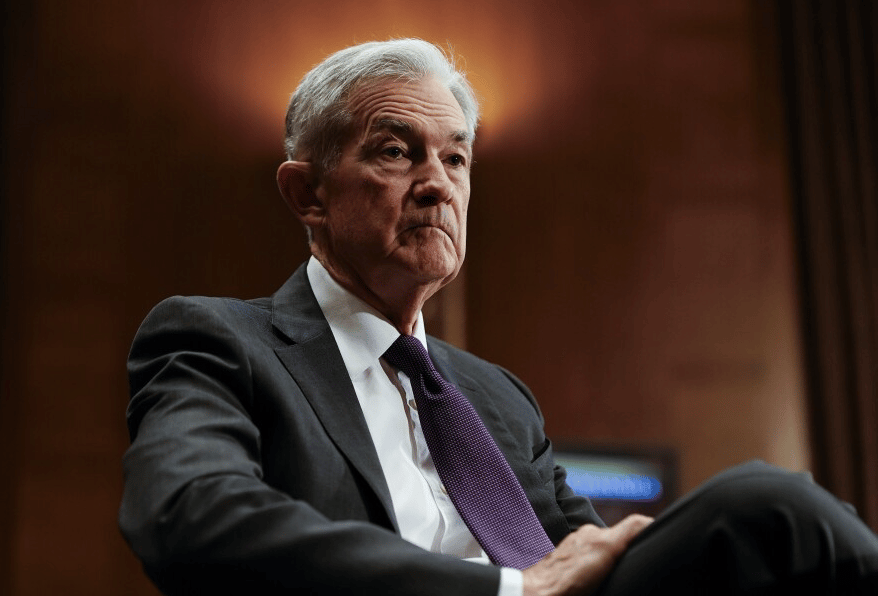Jerome Powell’s Final Jackson Hole Speech: Navigating Inflation, Jobs, and Political Pressure
8/22/20254 min read


Jerome Powell’s Final Jackson Hole Speech: Navigating Inflation, Jobs, and Political Pressure
August 21, 2025 | Business and Economy | Job and Economy
As the world’s financial markets hold their breath, Federal Reserve Chairman Jerome Powell prepares to deliver his eighth and final keynote address at the Jackson Hole Economic Symposium on Friday, August 22, 2025. This high-stakes speech, set against the stunning backdrop of Wyoming’s Grand Teton National Park, comes at a pivotal moment for the U.S. economy. With inflation creeping up, a softening labor market, and intense pressure from the White House to cut interest rates, Powell faces a delicate balancing act. Will he signal a shift in monetary policy, or will he hold the line? Here’s what you need to know about this critical moment for the Federal Reserve and the U.S. economy.
A Complicated Economic Landscape
The Jackson Hole Symposium, hosted annually by the Federal Reserve Bank of Kansas City, is a marquee event for central bankers, economists, and investors. Powell’s speech, scheduled for 10 a.m. Eastern Time, is expected to provide clues about the Fed’s next moves at its September 17 meeting. Historically, Jackson Hole has been a platform for Fed chairs to signal major policy shifts. Last year, Powell hinted at rate cuts, sparking market optimism. This year, however, the economic picture is murkier.
Inflation, the Fed’s perennial foe, is running above its 2% target, with the Personal Consumption Expenditures (PCE) index climbing to 2.6% in June from a low of 2.1% in April. President Donald Trump’s sweeping tariffs have added fuel to the inflationary fire, pushing up prices as businesses pass on higher costs. Meanwhile, the labor market is showing cracks. July’s jobs report revealed a mere 73,000 jobs added—well below expectations—while revisions erased over 250,000 jobs from prior months. The unemployment rate, though still low at 4.2%, signals a slowdown in hiring, partly due to Trump’s immigration crackdown reducing the labor supply.
The White House’s Shadow Looms Large
Powell’s speech comes under unprecedented political pressure. President Trump has openly criticized the Fed, calling Powell a “loser” and demanding rate cuts to boost economic growth. The administration’s aggressive tariff policies have complicated the Fed’s mission, creating a supply-side shock that’s driving inflation while simultaneously slowing job growth. Trump’s push for lower rates is echoed by some Fed governors, like Michelle Bowman and Christopher Waller, who voted for a rate cut at the July meeting, citing labor market weakness. However, the majority of the Federal Open Market Committee (FOMC) remains cautious, wary of reigniting inflation.
This political backdrop is particularly significant as Powell’s term as Fed chair ends in May 2026. Trump has vowed not to reappoint him, and with a recent vacancy on the Fed’s board, the president has an opportunity to shape the central bank’s future. Powell’s speech may also serve as a defense of his legacy, with some analysts suggesting he’ll use the platform to underscore the Fed’s independence and data-driven approach.
To Cut or Not to Cut? The Big Question
The central question for markets is whether Powell will signal a rate cut for September. Investors are betting on a 25-basis-point reduction, with an 83% probability according to CME Group’s FedWatch Tool. A weak jobs report and relatively benign consumer price data have fueled optimism, but sticky core inflation (above 3%) and rising wholesale prices complicate the picture. Some economists, like those at Bank of America, argue that tariffs and persistent inflation may force the Fed to hold rates steady at 4.25%–4.5%, a range Powell has described as “modestly restrictive.”
Powell’s data-dependent strategy—emphasizing incoming economic indicators over forecasts—has drawn criticism for being too cautious. With another jobs report due before the September meeting, he may opt for a “wait-and-see” stance, acknowledging labor market softness without committing to a cut. Alternatively, he could hint at a cut by noting that risks to employment and inflation are “coming into balance,” a phrase that suggests a neutral policy stance is appropriate, per Citi Research.
A New Policy Framework in Focus
Beyond immediate rate decisions, Powell is expected to address the Fed’s ongoing review of its monetary policy framework. Adopted in 2020, the current framework allowed for temporary inflation overshoots to compensate for prior low inflation periods. However, the post-pandemic inflation surge, which hit a 40-year high, exposed flaws in this approach. Analysts expect Powell to outline a shift toward a more preemptive strategy, one that prioritizes stable prices and guards against supply shocks like tariffs. This could signal a Fed more focused on keeping inflation in check, even at the cost of slower job growth.
What It Means for You
For everyday Americans, Powell’s speech could have tangible impacts. Lower interest rates could ease borrowing costs for mortgages, car loans, and small businesses, potentially stimulating economic activity. However, persistent inflation driven by tariffs could erode purchasing power.
Conclusion: A Defining Moment
Jerome Powell’s final Jackson Hole speech is more than a policy update; it’s a high-stakes moment for the Federal Reserve to navigate competing pressures. With inflation rising, the labor market softening, and the White House pushing for rate cuts, Powell must balance the Fed’s dual mandate of price stability and maximum employment while defending its independence. His words could jolt markets—Evercore ISI warns of a potential 7%–15% stock market pullback if he strikes a hawkish tone—or signal relief for borrowers hoping for lower rates. Tune in Friday at 10 a.m. ET on the Kansas City Fed’s YouTube channel to hear Powell’s take on this economic crossroads.
Thought Questions:
Should the Federal Reserve prioritize fighting inflation or supporting the weakening labor market in its September decision?
How might Trump’s tariffs continue to shape the Fed’s policy choices in the long term?
Can the Fed maintain its independence under political pressure, and how might Powell address this in his speech?
hello@boncopia.com
+13286036419
© 2025. All rights reserved.